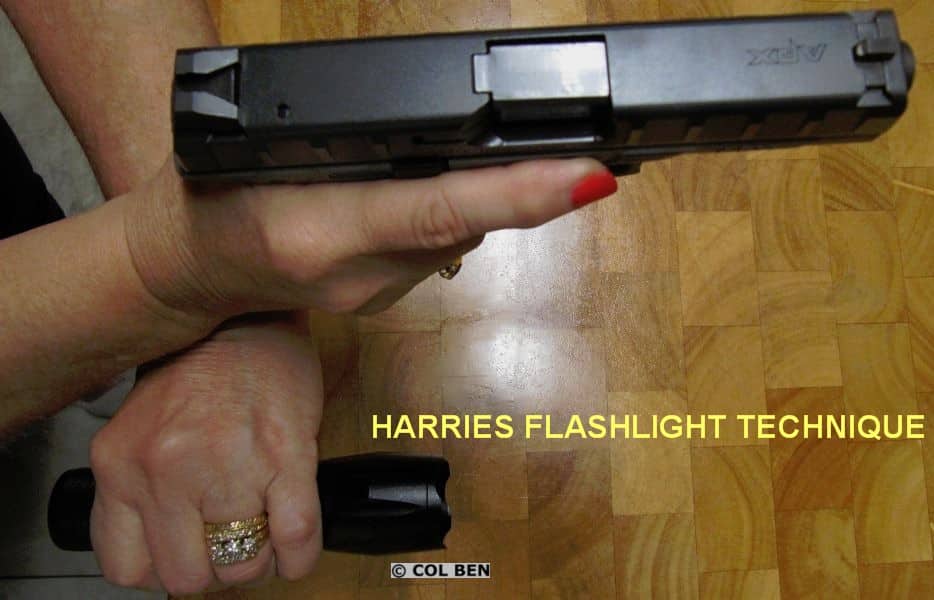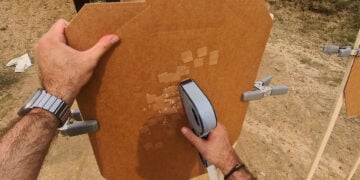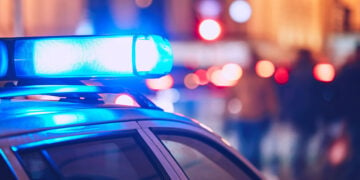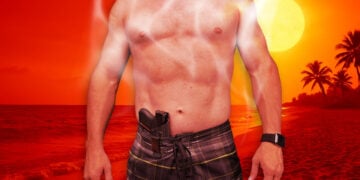For self-defense and the unexpected “Bump in the Night” possible threats or actual deadly-force encounters, do you need some form of very readily available extra lighting? Like a handheld flashlight or a weapons-mounted light (WML)?
Or, both?
Or, none?
Of course, you must know and practice how to properly and safely use them. And you must safeguard these lights, regularly check their functioning, and probably have a custom holster if carrying it. You’ll also want to keep a supply of batteries handy just in case. So, to help you make these very personal decisions, below is some information to consider. Of course, every situation, home, and person has different factors, uses, priorities, and circumstances to consider for their decisions.
Do you use a handheld flashlight alone, a WML, or both, or none, or a gun without a mounted light and a handheld flashlight? What are your reasons for this decision? I hope the tips and information below helps you make your decision.
WML and Flashlights for Home Defense
Think about it. Practically, about the only time a handgun and flashlight are needed at the same time by the ordinary, civilian citizen (non-law enforcement and non-military) for use is in the home at night time for self-defense. However, there are different possible uses to consider. The role, mission, considerations, guidelines, and laws for a civilian homeowner are very different than those for a law enforcement or SWAT officer and a military member on patrol.
Lighting and Timing
In low-light conditions for self-defense in the home at close range and for common street crimes, there probably will not be adequate time (a very few seconds) even to access and employ a handheld flashlight. And realistically, these home self-defense situations do not usually occur in total darkness, but with some existing light. The situation matters.
Tips:
- Keep a lamp light turned on near all your home’s entry points to discourage intruders and for better illumination at night.
- A bathroom night light also helps your navigation inside the home.
Primary Purpose of Any Civilian Light Accessory
A handheld flashlight is meant to be used primarily for finding your way and identifying people before they become a threat and secondarily as a less-lethal defensive tool. It is not intended to be a search tool to locate bad guys/gals so that you can shoot at them.
A WML serves the one purpose of verifying that what your gun is pointed at is the target that you want to shoot. It is not meant to be a tool for finding your car keys or finding your way in the dark.
The primary purpose of an additional light accessory or flashlight in the home is for “possible threat” identification and “possible target” discrimination, before aiming and engaging a handgun at the individual. It is not for searching for a possible bad guy-gal (thus pointing the WML and the handgun directly at everyone discovered,) so you can shoot them. It is for identifying and confirming if there are definite threats and targets.
For example, is that your son Johnny’s friend in the hallway (an un-mentioned sleepover guest) pulling out his cell phone?
Is that just Pop getting up in the middle of the night with his cane for a bathroom visit?
Is your teenage daughter Sally coming in late past her curfew?
Is your spouse getting a triple-decker sandwich and late night snack?
Or, yes it might be an actual intruder threat, so then you can confirm and shoot as necessary.
So, you could identify a possible threat with your handheld flashlight, then drop your handheld flashlight, and quickly switch on your WML to engage the individual you just determined to be a definite threat. Hey, this could get complicated with much-added risk and danger! Let’s keep it simple and decide what is best for yourself and your uses.
Tips:
- One of the most fundamental gun safety rules: Never point a gun at anything you do not want to destroy.
- You do not have to point the WML and handgun directly at someone to determine if they are friend or foe. You can point at the ground in their area but always consider the situation.
- The natural corona or halo of emitted light will provide illumination of the possible threat and their hands within about 10 yards to help identify them when pointed at the individual’s feet.
Negligent Shootings and Light Options
Naturally, two of the most common alternatives for additional light are a WML and a handheld flashlight. Each has pros and cons, and each has been in its share of negligent shootings, by both trained law enforcement and military members, as well as by civilians. For example, a WML allows you to control the handgun with both hands so that you can get your shot off quicker. Here is some other information to consider.
I read several accounts of fatal shootings of unarmed individuals by both civilians and law enforcement members with a WML on a handgun where they were trying to search for, illuminate and identify the other person. The shooters meant to actuate their light, but unintentionally fired the gun and some killed the other person. So very sad and be careful!
A detective in Texas tried to turn on his flashlight with its pressure switch under the trigger guard and instead pulled the trigger and killed the suspect. In a similar case in Bronx, New York, a police officer made the same mistake and killed someone. In Denver, an officer accidentally fired his gun when trying to turn on his flashlight during a traffic stop. The police chief issued an order authorizing only flashlight attachments with a different configuration, where the switch was located in front of the trigger guard. Many police departments have banned flashlights with switches located under or near the trigger and where the light is activated by a toggle switch and not a pressure switch. Several specify the flashlight technique to use.
A WML is an easy and quick way to engage a threat in low-light conditions, but…
A WML is not best for searching for possible bad guys/gals; instead, consider an additional handheld flashlight for identifying people before they become a threat.
Tip:
- A WML should supplement, rather than replace, an additional handheld flashlight.
Everything a WML points at the handgun also points at.
When pointing a weapon with a light attached at someone, you might commit a felony of aggravated assault with a deadly weapon. Assault with a deadly weapon is a felony punishable by one to twenty years in prison, depending upon the state’s statute and sentencing guidelines.
Tip:
- Remember this handgun safety rule: Never put your finger on the trigger until you have your eyes and front and rear sights on the specific target and you are ready to shoot.
I believe there is a place for WML, indeed for military and law enforcement personnel but also for civilians for home defense to verify that the threat is a hostile one. But, training and practice are the necessary keys for everyone.
WML and Handheld Flashlight Combination Works Very Well
I also believe that a combination of both a WML and a handheld flashlight separately is necessary, for both the above-stated purposes and reasons. Of course, the specific civilian use and purpose dictate if both or either or is appropriate. Be it home use or carry use. We can use the handheld flashlight to find and identify the individual who is a potential threat and the WML to verify the actual threat in our sights is the one to engage and do so quickly.
Harries Flashlight Technique: Combines Handheld Flashlight and Your Handgun
There can also be a combination of a handgun without a light attached and a separate handheld flashlight. One frequently-used flashlight shooting technique like this is called the “Harries Technique.” If you are a right-handed shooter, you grab the flashlight with your left hand in an “ice pick” grip, so it looks like you can strike downward as if you are stabbing someone. Your left thumb operates the flashlight switch. Now bring your left hand with the flashlight underneath the handgun (which is on top and held with the right hand) and put your hands back to back with your wrists touching. Be sure to not cross your hand with the flashlight in front of the loaded gun. And be sure the left hand with the flashlight is underneath the right hand with the pistol in it. There are several recognized flashlight shooting techniques.
What Amount of Light is Optimal for Self-Defense
I want a flashlight that will meet the demands of my particular use, be it identifying a potential threat or engaging an attacker. Lumens are a measure of the total amount of visible light in some defined beam or angle or emitted from the source. Lumens are the minimum visible light output from any source, so the higher the lumens, the more light is visible and usable. A 40-watt light bulb produces about 450 lumens, while a 60-watt bulb equates to about 800 lumens. A standard LED lamp produces about 470 lumens.
Tip:
- For a WML or handheld flashlight to be an effective self-defense tool for identifying a potential threat and engaging and blinding an attacker, I believe it should have the potential and be bright enough to disorient the attacker and to act as a floodlight for a large, dark area.
More lumens provide more details on your potential threat. It also gives you more light control to blind an attacker and limits their ability to see you or their environment. And what if multiple attackers need to be lit up?
High-Lumens flashlights emit brighter, broader, more intense beams that could help save your life if used properly. So know your flashlight, its functions and uses, and train with it. Try to test the flashlight before you buy it to see if it meets your needs, if possible. There are misleading lumen claims, design differences, and advances in technology. So, understand them and be cautious before purchasing. Keep in mind that small flashlights at a very decent price today can emit 500 lumens and beyond, compared to the acceptance a few years ago of 80 to 100 lumens.
My Preferred Lumens
The lumens I want for my WML and handheld flashlight light sources are somewhere between 450 and 800 lumens, with a minimum of 450 lumens. Yes, 200 lumens will identify the threat, but I want more details and help from my self-defense tool. I should see a decent amount of visible light and details and be able to get a very good start with my tactical tool with 450 lumens for my civilian tactical self-defense uses. I do want more help disorienting the attacker. For example, my primary WML is rated at 800 lumens, and my primary handheld flashlight is 588 Lumens. All of my handheld flashlights are 450 lumens or more and cost less than $40.
My Recommendation
I believe that a WML and a handheld flashlight should be a part of your home self-defense plan, for the defined civilian purposes given above.
Further, I generally suggest at least 450 lumens and more if appropriate for your uses and various situations. This amount of lumens should allow you to see clearly both inside and outside at night time, to clearly identify and disorient criminals, and to aim and engage the bad guys/gals.
So, “What’s in your flashlight?”
Important: Safety first always! Think of your WML and handheld flashlight as tools for self-defense and saving your life and the lives of your loved ones.
Continued Success, train and practice with your flashlights, and be safe!
Photos by USA Carry and Author.
* This personal opinion article is meant for general information & educational purposes only and the author strongly recommends that you seek counsel from an attorney for legal advice and your own personal certified weapons trainer for proper guidance about shooting & using YOUR firearms, self-defense and concealed carry. It should not be relied upon as accurate for all shooters & the author assumes no responsibility for anyone’s use of the information and shall not be liable for any improper or incorrect use of the information or any damages or injuries incurred whatsoever.
© 2018 Col Benjamin Findley. All Rights Reserved. This article may not be reprinted or reproduced in whole or in part by mechanical means, photocopying, electronic reproduction, scanning, or any other means without prior written permission. For copyright information, contact Col Ben Findley at [email protected].











A friend who is an avid hiker and naturaist, but not a pistol person, used to tell me about his nighttime hikes. I’ve even gone on a few with him. I’m the guy with at least one pistol, a knife, phone and a couple of fairly bright lights in the DAYTIME.
He’d go out without any light, or with a very cheap LED light, so I gave him a bright light for the time. He told me how he thinks it kept him from being robbed on a trail one night by a man whe kept trying to approach him. He just kept shining the light in the guys eyes and backing away.
I’m glad it worked for him, but I’d have a .45 acp behind the light, in case it didn’t.
Good discussion, Ben. I keep a handgun and shotgun, both with WMLs next to my bed. I also have a couple of bright flashlights on the nightstand. That way I can use what seems best for the situation. Something to consider is that when using a WML you are directly behind that light. A bad guy can just aim behind the light to hit you. With a handheld, you can hold it out to the side away from you when you are just checking out your surroundings. On the other hand, there are only myself and my wife at home. If I hear someone moving in our home, I can use a WMLwith no fear of pointing my gun at a family member because I know where my wife is and no one else should be in our house at night.